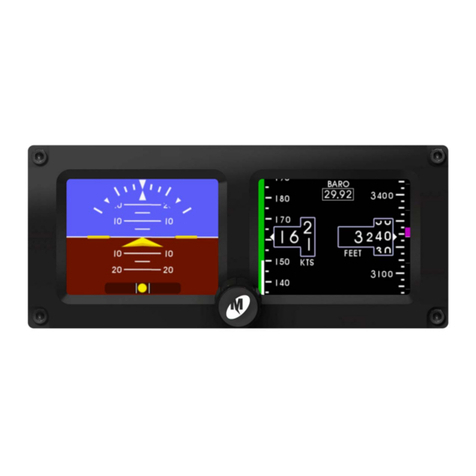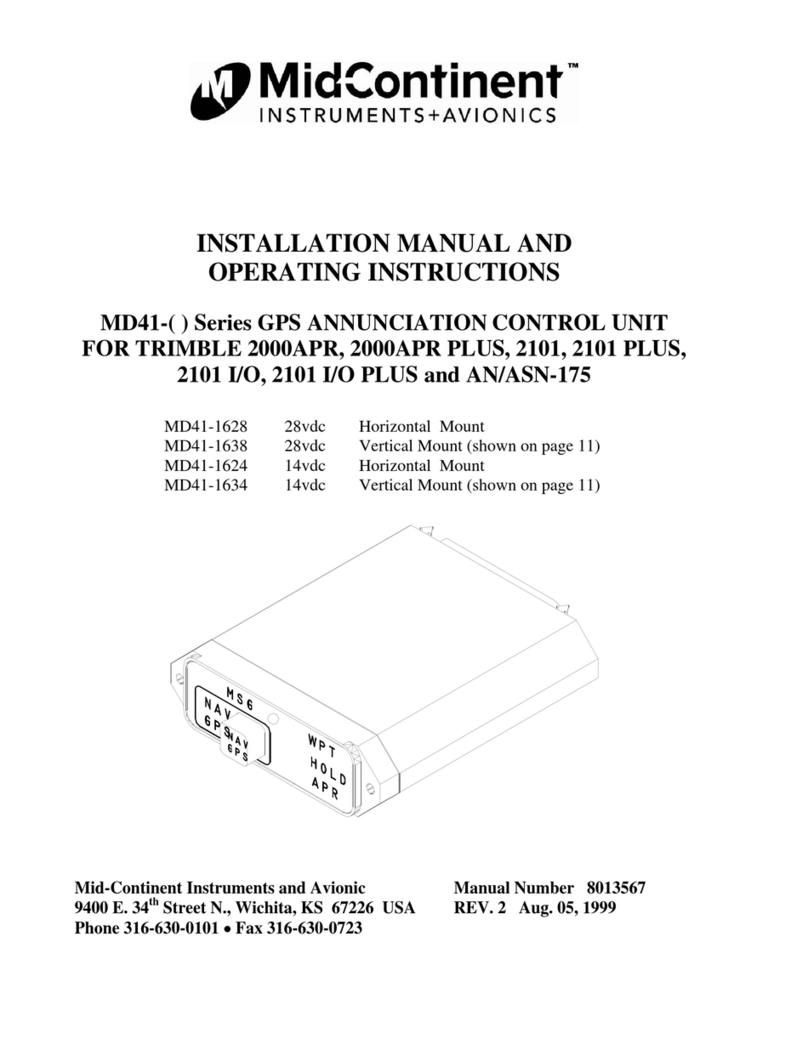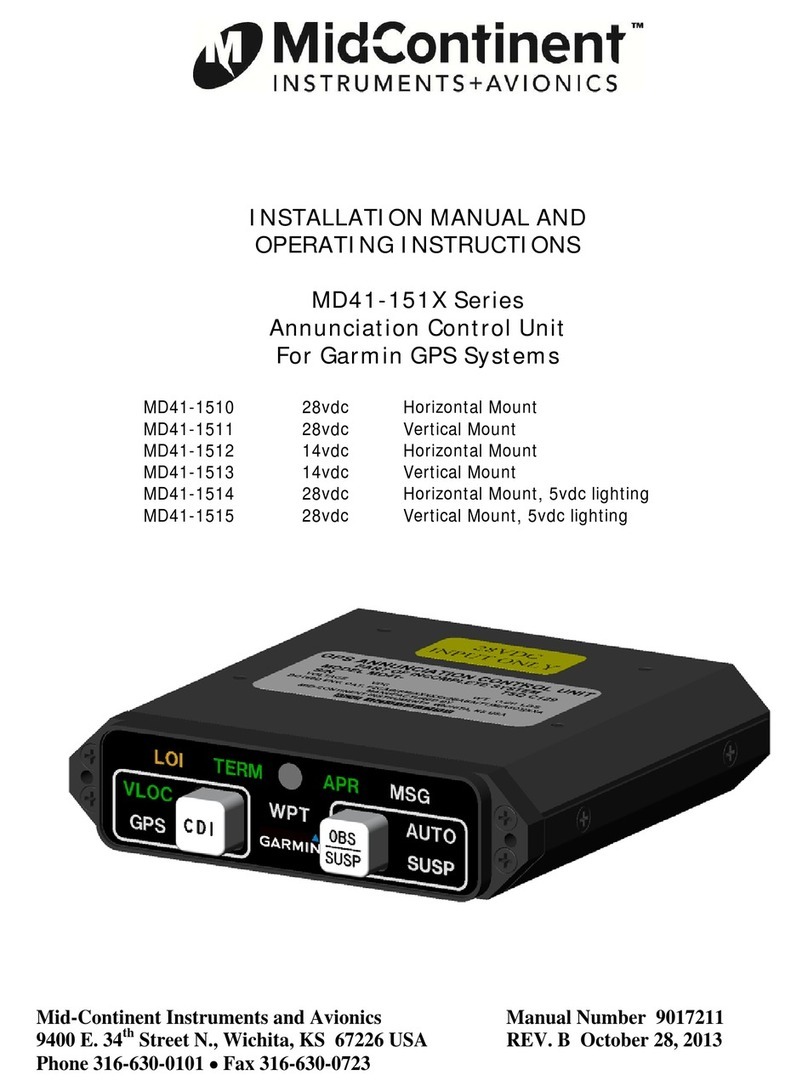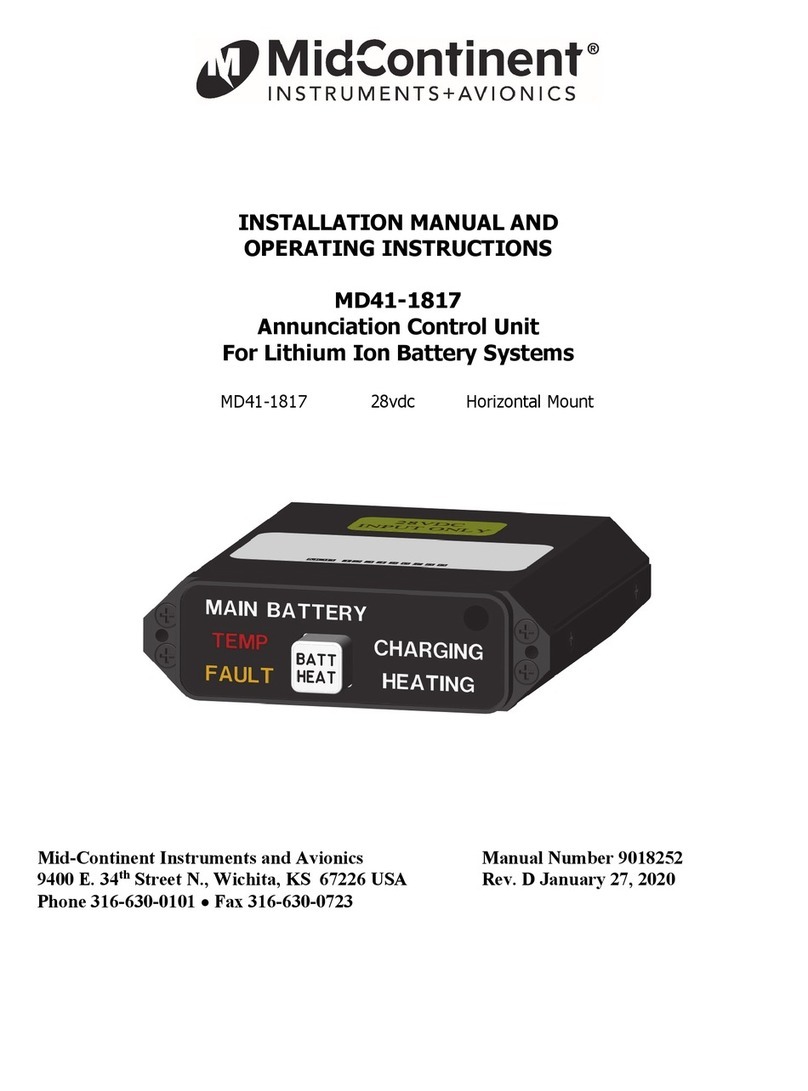
REV. 0 Nov. 12, 1997 9
REAR VIEW OF J1 CONNECTOR
J1
PIN NO.
1 ---------------------------- GPS ANNUNCIATION (receives ground from remote transfer relays)
2 ---------------------------- NAV ANNUNCIATION (receives ground from remote transfer relays)
3 ---------------------------- MSG ANNUNCIATION (receives logic low from GPS receiver)
4 ---------------------------- APR ANNUNCIATION (receives logic low from GPS receiver)
5 ---------------------------- DIMMER IN (from aircraft dimming bus for push-button lighting)
6 ---------------------------- SPARE
7 ---------------------------- LAMP TEST (receives ground from remote test switch)(optional conn.)
8 ---------------------------- ACTV ANNUNCIATION (receives logic low from GPS receiver)
9 ---------------------------- PTK ANNUNCIATION (receives logic low from GPS receiver)
10 -------------------------- OBS MODE SELECT ( logic low sent to GPS receiver)
11 -------------------------- FCS LOC ENGAGE (ground when GPS is in active mode)(for autopilot)
12 -------------------------- TO NAV CIRCUIT BREAKER (for fault monitoring)
13 -------------------------- 14 or 28 VDC UNIT POWER (depends on dash number)
14 -------------------------- EXTERNAL RELAY ENERGIZE (ground to energize remote transfer
relays when GPS is selected)
15 -------------------------- SPARE
16 -------------------------- SPARE
17 -------------------------- SPARE
18 -------------------------- SPARE
19 -------------------------- SPARE
20 -------------------------- SPARE
21 -------------------------- SPARE
22 -------------------------- SPARE
23 -------------------------- OBS HOLD ANNUNCIATION (receives logic low from GPS_
24 -------------------------- SPARE
25 -------------------------- POWER GROUND
FIGURE 3-1 SCHEMATIC PINOUT, 25 PIN DSUB

































